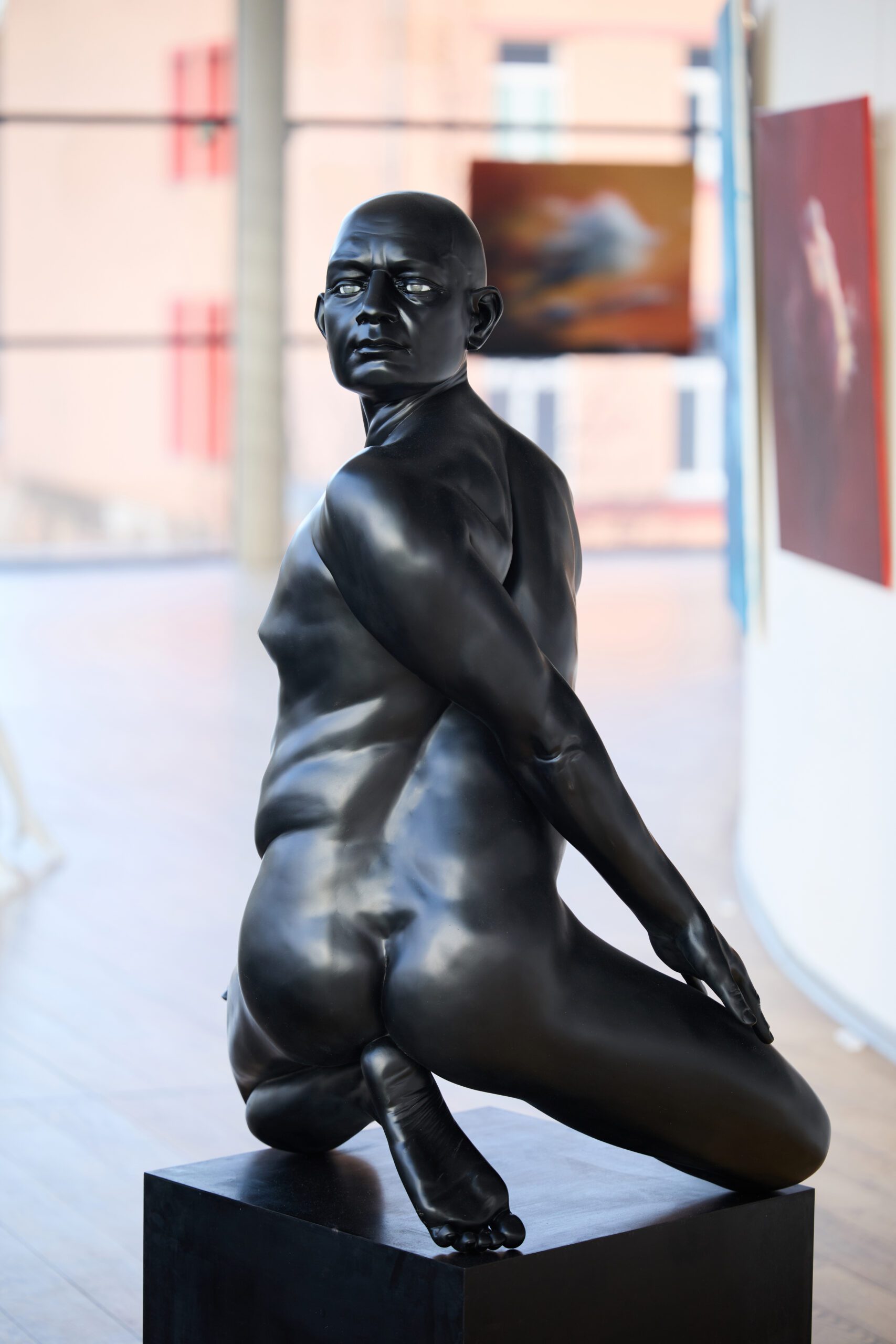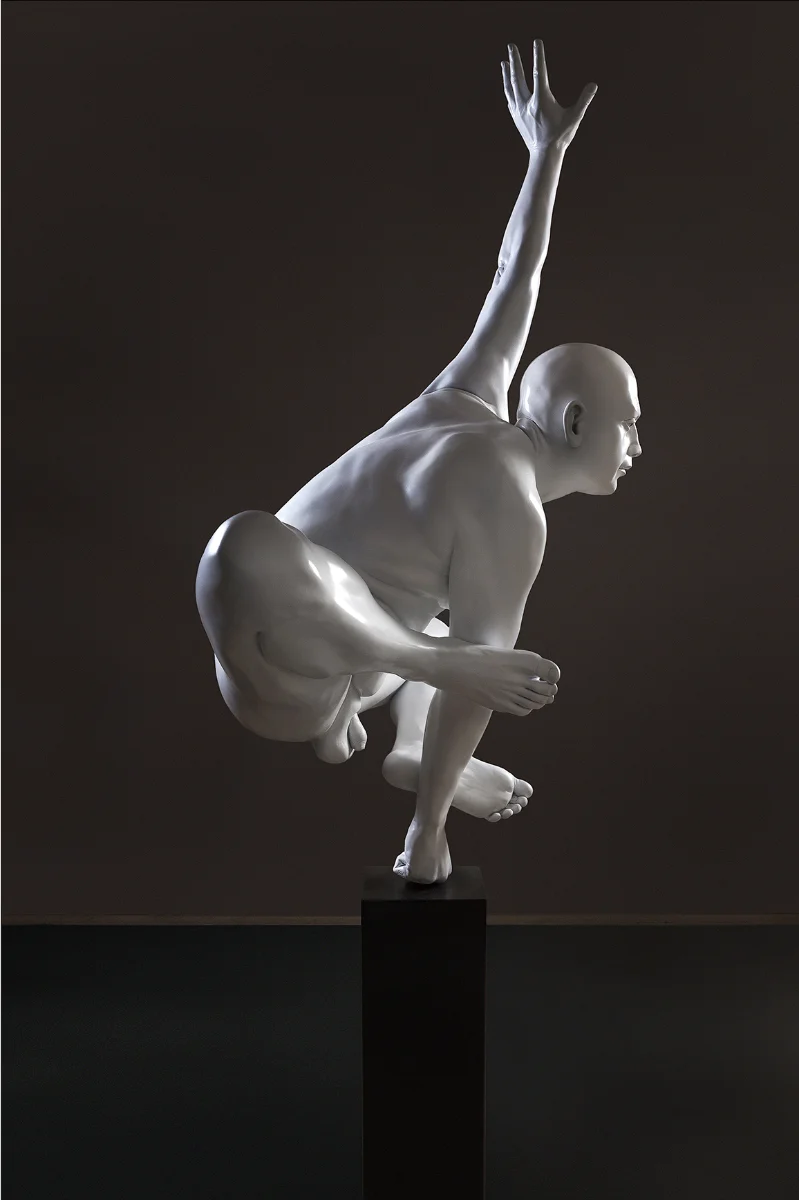Ishvara III (Now I become Death, the destroyer of worlds)
Ishvara III (Now I become Death, the destroyer of worlds), 2025
polyester gel, fiberglass, acrylic, glass, steel
life-size + cube base side 53 cm
Ishvara III follows on from the older work Ishvara. Again, it is an ironic view of divinity, or rather the personification of the god of all gods. The pedestal – a cube forms the lower part of the entire work and represents matter – the earth. From the perspective of human life, the earth with its processes remains as if unchanging and constant. Man has grown from this matter and in his vanity tries to control, shape and transform it, tries to become a god. Man is born, lives, dies. Yet the earth figuratively remains in its place. From the perspective of human life, it appears unchanging. The statue – the figure, with its composition, connects the entire human body in a left-sided (self-)destructive spiral. Through the mutual cooperation of all parts, the body creates a kind of tetrahedron twisted into a spiral. The spiral is the axis of the composition of the figure (statue), manifests itself in almost all parts and symbolizes time (or a vain effort to go against time) and the essence of being. It depicts the passage of time during the course of human life.
Photos: Miloš Šálek







